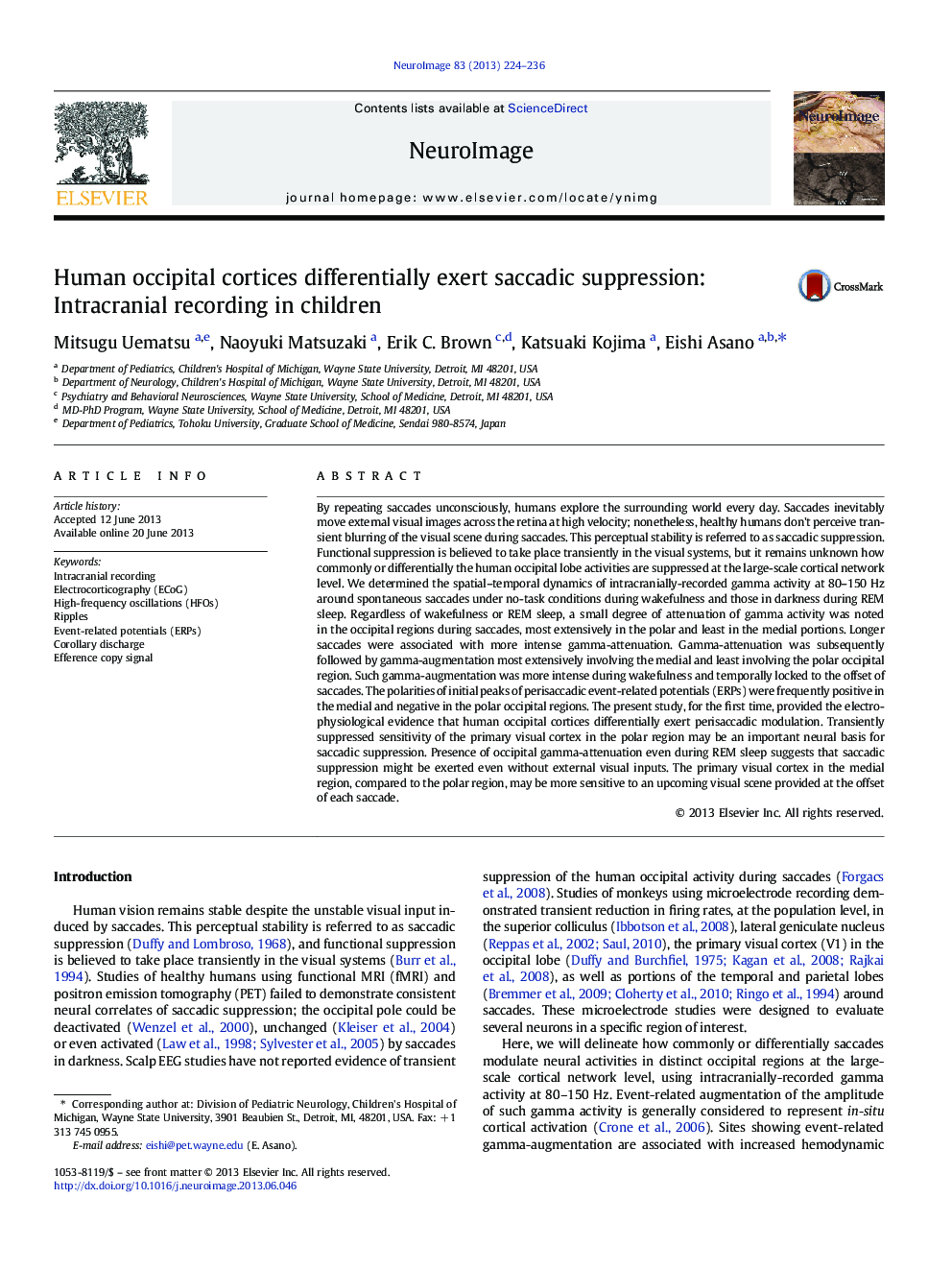| کد مقاله | کد نشریه | سال انتشار | مقاله انگلیسی | نسخه تمام متن |
|---|---|---|---|---|
| 6028116 | 1580921 | 2013 | 13 صفحه PDF | دانلود رایگان |
- Gamma activity80-150Â Hz was attenuated in the occipital regions during saccades.
- Saccade-related gamma-attenuation was most prominent in the occipital pole.
- Saccade-related gamma-attenuation was noted even during REM sleep.
- Such gamma-attenuation was subsequently followed by gamma-augmentation.
- Longer saccades were associated with more intense gamma-attenuation.
By repeating saccades unconsciously, humans explore the surrounding world every day. Saccades inevitably move external visual images across the retina at high velocity; nonetheless, healthy humans don't perceive transient blurring of the visual scene during saccades. This perceptual stability is referred to as saccadic suppression. Functional suppression is believed to take place transiently in the visual systems, but it remains unknown how commonly or differentially the human occipital lobe activities are suppressed at the large-scale cortical network level. We determined the spatial-temporal dynamics of intracranially-recorded gamma activity at 80-150Â Hz around spontaneous saccades under no-task conditions during wakefulness and those in darkness during REM sleep. Regardless of wakefulness or REM sleep, a small degree of attenuation of gamma activity was noted in the occipital regions during saccades, most extensively in the polar and least in the medial portions. Longer saccades were associated with more intense gamma-attenuation. Gamma-attenuation was subsequently followed by gamma-augmentation most extensively involving the medial and least involving the polar occipital region. Such gamma-augmentation was more intense during wakefulness and temporally locked to the offset of saccades. The polarities of initial peaks of perisaccadic event-related potentials (ERPs) were frequently positive in the medial and negative in the polar occipital regions. The present study, for the first time, provided the electrophysiological evidence that human occipital cortices differentially exert perisaccadic modulation. Transiently suppressed sensitivity of the primary visual cortex in the polar region may be an important neural basis for saccadic suppression. Presence of occipital gamma-attenuation even during REM sleep suggests that saccadic suppression might be exerted even without external visual inputs. The primary visual cortex in the medial region, compared to the polar region, may be more sensitive to an upcoming visual scene provided at the offset of each saccade.
Journal: NeuroImage - Volume 83, December 2013, Pages 224-236
